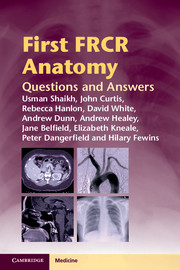Foreword
Published online by Cambridge University Press: 05 March 2012
Summary
Foreword
Knowledge and understanding of human anatomy is a key element of medical training, whether it is at an undergraduate or at a postgraduate level. This is particularly so in interpreting radiological images. A good radiologist requires many different skills and competences, but right up there at the top of the list is a detailed knowledge of anatomy relevant to radiology. Over recent years it has become apparent that the knowledge of anatomy acquired at medical school and in specialties prior to entry to radiology training is variable and the Royal College of Radiologists has made it one of its priorities to set the standard of radiological anatomical knowledge that all radiologists should achieve. Theoretically, knowledge of anatomy should be possible to acquire as a radiology trainee passes through the modular training, but many involved in training have realized that this on its own is not sufficient. A curriculum and an appropriate form of assessment are required to ensure consistency, and there is good evidence that the need to pass an exam drives learning. The recently introduced anatomy curriculum and the First Part FRCR anatomy examination are intended to achieve this end.
Radiological images, particularly cross-sectional images, are also an excellent way of teaching anatomy to medical students, and more and more medical schools are taking advantage of this facility, as are specialties where anatomy is essential for practice within that particular area of medicine. The exciting developments in molecular and functional imaging mean that it is now even more important to be able to localize a particular function to a particular anatomical structure, and this is only possible with an excellent understanding and knowledge of anatomy.
- Type
- Chapter
- Information
- First FRCR AnatomyQuestions and Answers, pp. vii - viiiPublisher: Cambridge University PressPrint publication year: 2012



